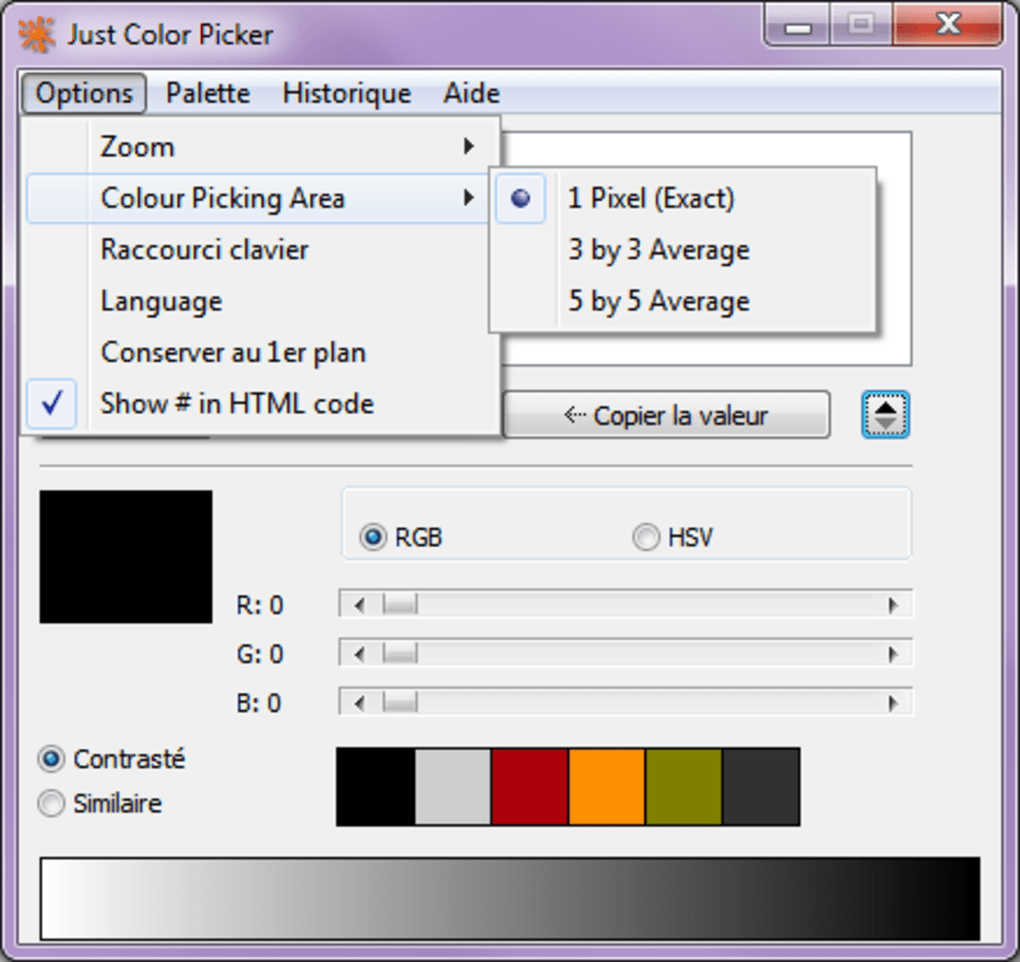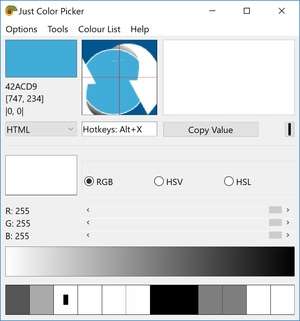
What is the scope of the template queries?
#Just color picker code#
If we want to make sure that the references injected by are present, we should always write our initialization code using ngAfterViewInit().ĭepending on the situation, the template references might already be present on ngOnInit(), but we shouldn't count on it. If we now run this program, here is the output that we get in the console:Īs we can see, Angular has filled automatically our member variable primar圜olorSample with a reference to a component! Can we use ngOnInit() instead of ngAfterViewInit()?
#Just color picker how to#
Here is an example of how to use this lifecycle hook: If we want to write component initialization code that uses the references injected by we need to do it inside the AfterViewInit lifecycle hook. The value of this injected member variable is not immediately available at component construction time!Īngular will fill in this property automatically, but only later in the component lifecycle, after the view initialization is completed. When are variables injected via available? This injected ColorSampleComponent instance is the same one linked to the custom element present in the template. In that case, we can inject a reference to the instance named #primar圜olorSample by using using the primarySampleComponent member variable is going to be filled in by Angular with a ColorSampleComponent instance. Let's say that AppComponent needs a reference to the component that it uses inside its template, in order to call a method directly on it. Using to inject a reference to a component

If that's the case, then we can obtain references to those template elements and have them injected into the AppComponent class by querying the template: that's what is for. Many times we can coordinate these multiple components and HTML elements directly in the template by using template references like #primaryInput or #primar圜olorSample, without using the AppComponent class.īut this is not always the case! Sometimes, the AppComponent might need references to the multiple elements that it contains inside its template, in order to mediate their interaction. The component is the little palette blue square, and next to it we have an input that is linked to a color picker popup. We are going to base all our examples in this initial template. as well as multiple Angular Material componentsĪnd this is what the AppComponent looks like on screen:.third-party components (like a color picker).custom application components like the component.So without further ado, let's get started with our decorator deep dive! When do we need the decorator?Īs we know, in Angular we define a component template by combining plain HTML elements with other Angular components.Īs an example, we have here an Angular AppComponent template that mixes both HTML and custom components in its template:Īs we can see, this template includes several different elements types, such as: how to use to inject one of the multiple directives applied to a single element or component.using to inject the plain HTML element of a component.


In this post, we are going to quickly cover all the features that we have available in this decorator while giving practical examples for each use case along the way.

This decorator has a lot of features: some of them might not be very well known but they are extremely useful. The Angular decorator is one of the first decorators that you will run into while learning Angular, as it's also one of the most commonly used decorators.


 0 kommentar(er)
0 kommentar(er)
